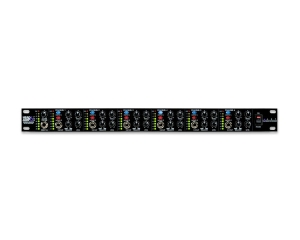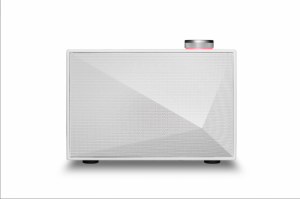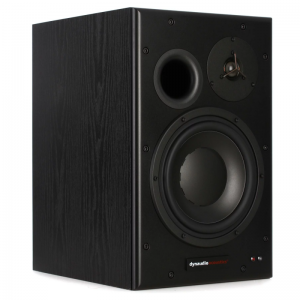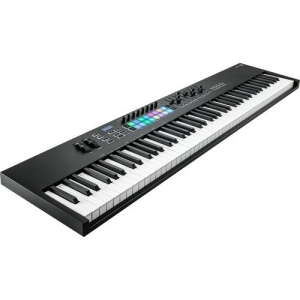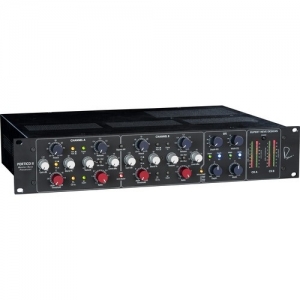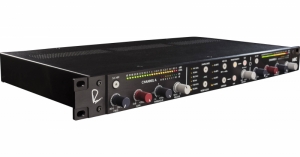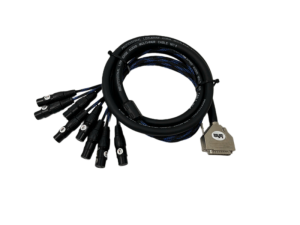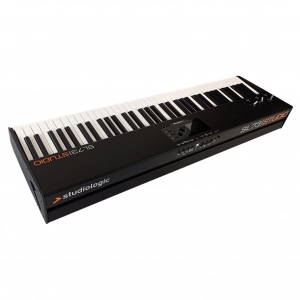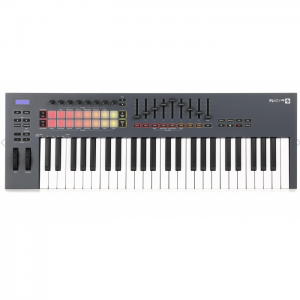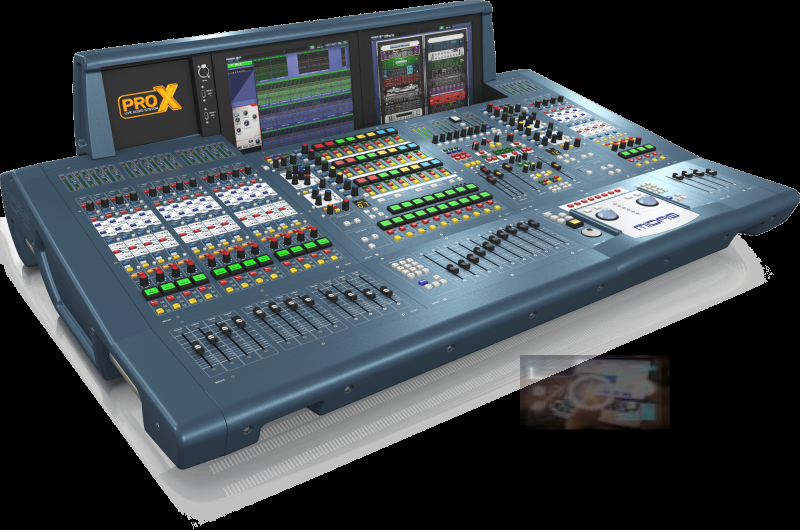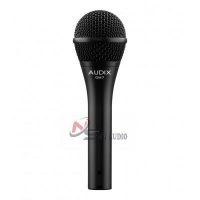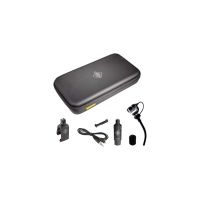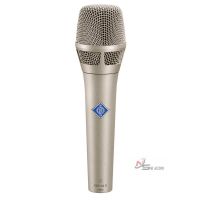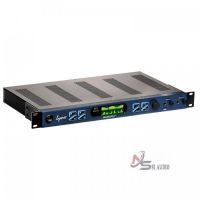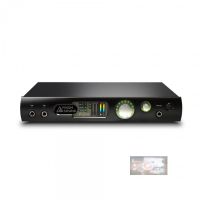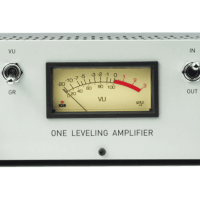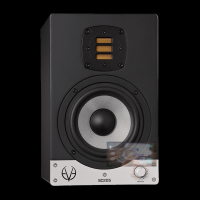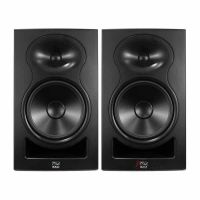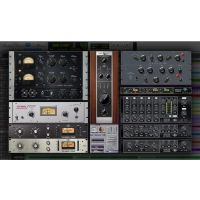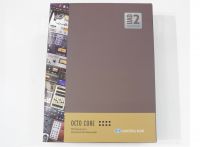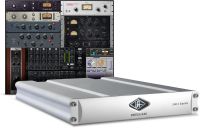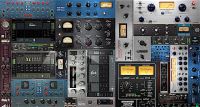PRO X-CC-IP Digital Mixer Center Midas 168input 99bus
730.000.000 VND
734.350.000 VND
Lượt xem 6486
24 THÁNG
Đánh giá 0 lượt đánh giá
Để lại số điện thoại, chúng tôi sẽ gọi lại ngay
Vận chuyển ngày mai nếu đặt hàng trong 1 ngày, 4 giờ và 49 phút!
Tính năng nổi bật
Thông tin giao hàng
Tính năng sản phẩm
-
Live performance digital console control centre with up to 168 simultaneous inputs
-
99 time-aligned and phase-coherent mix buses
-
HyperMAC and AES50 networking allows up to 288 inputs and 294 outputs @ 96 kHz Sample Rate
-
HyperMAC router with 192 bidirectional channels over copper and optical fibre
-
Provides dual redundant snake connection to the NEUTRON Audio System Engine
-
Snake connections up to 500 m with optical fibre or 100 m with CAT5/5e cable
-
10 VCA (variable control association) and 8 POPulation groups
-
Up to 36 assignable 1/3 octave Klark Teknik DN370 graphic equalisers
-
Up to 24 simultaneous internal multi-channel effects
-
29 Midas PRO motorised 100 mm faders
-
2 daylight viewable 15" full colour TFT display screens
-
Fully interpolated touch sensitive controls
-
Optional wireless remote control with Midas MIXTENDER App for iPad*
-
Three bay auto-ranging universal switch-mode power supply with N+1 redundancy
-
Designed in the U.K.
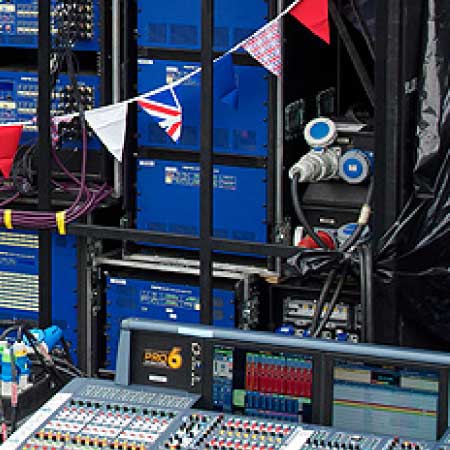
PRO SERIES PRO X-CC-IP
The Midas PRO Series family moves up a gear with the PRO X control centre and the industry-changing NEUTRON Audio System Engine. Featuring 168 simultaneous input channels and 99 time-aligned and phase-coherent mix buses, the PRO X sets a new performance benchmark in high-profile live sound applications and is a truly impressive digital control surface for the engineer whose very livelihood depends on both unparalleled functionality and reliability. Like all PRO Series consoles, the PRO X features managed latency and 40 bit floating point processing precision.
HyperMAC and AES50 audio networking technologies allow the PRO X to dynamically assign up to 288 inputs and 294 outputs at 96 kHz sampling rate to any of its input channels and bus outputs on a scene-by-scene basis. This high level of connectivity, coupled with the large channel and bus counts, makes the PRO X equally at home in theatres and symphony halls as it is in live concert touring, outside broadcast and music festivals.

Digital Audio Networking
SuperMAC (AES50-Compliant) and HyperMAC digital audio networking technologies from Klark Teknik simultaneously provide high channel counts, ultra low and deterministic latencies, sample-synchronous and phase-aligned networked clock distribution, error detection, network redundancy, and ease of deployment and use – to meet the demanding requirements of live concert touring.
The PRO X HyperMAC router provides a dual redundant snake connection to the NEUTRON Audio System Engine over optical fibre and copper with a bandwidth of 192 bidirectional channels of 96 kHz 24 bit digital audio, up to a distance of 500 m with optical fibre or 100 m with CAT5/5e cable.
PRO X is compatible with all Midas PRO Series digital I/O units, as well as with any other 96 kHz enabled AES50-equipped devices. Multiple PRO Series consoles can be connected together to create either larger mixing systems, or multiple discrete mixing consoles can share a common resource of networked and distributed I/O interfaces.
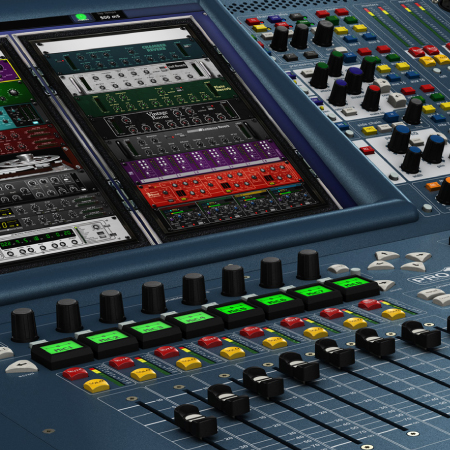
PRO X Advanced Navigation Flexibility
PRO X incorporates new and innovative methods of channel and mix bay navigation: FLIP Navigation, FX Navigation, GEQ Navigation, and MCA Navigation. These four options allow an engineer to easily and efficiently mix a large number of inputs on a compact control surface. PRO X also features the ability to display and control any output bus on the input control bay area. This navigation flexibility makes working with the console as simple as requirements dictate, or as deep and complex as a user desires. PRO X’s new centre section, which features 24 LCD switches that provide immediate access to up to 24 stereo pairs of output mix buses, also supports the new navigation modes.
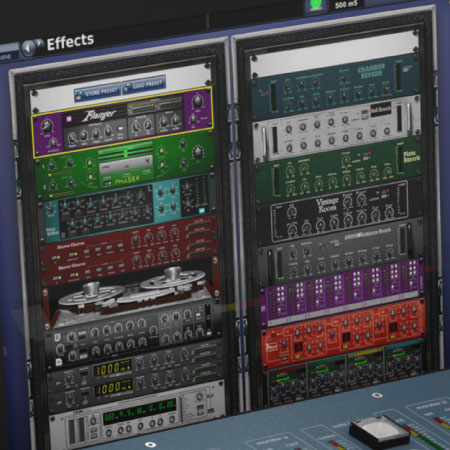
Integrated Effects Processors and Graphic Equalisers
The PRO X can simultaneously process up to 24 internal multi-channel effects and NEUTRON’s 40 bit floating-point audio processing hosts a wide choice of virtual effects devices, which range from dual-mono delay units, stereo modulation and numerous diverse reverberation simulations, multi-band compression, dynamic EQ and multi-channel dual-function dynamics processing. Up to 36 1⁄3 octave Klark Teknik DN370 Graphic Equalisers (GEQs) are provided, which can be patched into any output.
PRO X provides comprehensive automatic latency management of all internal routing andprocessing latency – and also includes compensation for external analogue inserts. All audio samples are synchronised before summing, resulting in absolute phase coherence at the outputs,without the comb filtering effects of competing products that often result in specific frequencies being cancelled out completely.
All effects processors and GEQs are custom-designed to function within this automatic latency compensation system. This ensures a phase-coherent, sample-accurate mix regardless of whether the devices are used as channel inserts or on auxiliary buses.
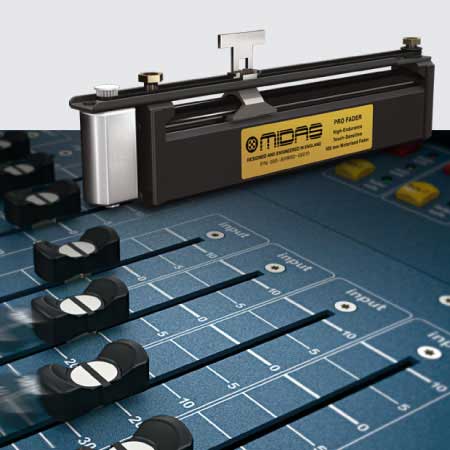
MIDAS PRO Fader
Not satisfied with the existing motorised fader choices in the marketplace, Midas created the PRO FADER, rated for up to a million cycles – three times that of other leading manufacturers - and providing high linearity, robustness, and smooth feel during operation. This decision yielded many other benefits, including total quality control over the manufacturing process and lower costs that could be passed on to customers.
As a digital console manufacturer, Midas has a perspective on the actual application of motor faders that a component manufacturer would not have. The multi-disciplinary development project combined mechanical design, electronic hardware and software optimisation with a rigorous testing programme and an investment in material science to produce the best possible performance in actual operation in Midas PRO Series consoles. Semi-precious metals are used for the wiper fingers for their hard-wearing properties, and precision resistive tracks were created that offered highly linear positional accuracy, coupled with long-term durability and even response in use.
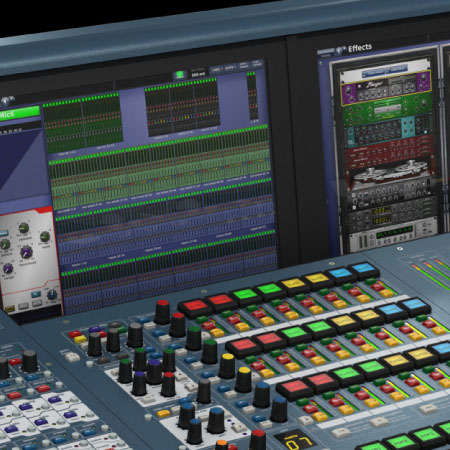
Highest Quality Display Screens
The PRO X Control Centre features dual 15" full colour daylight-viewable TFT displays for use in all environments, both inside and outdoors. The displays provide visual feedback for the entire system, the on-screen menus instantly navigate to the console overview page, which keeps all vital information (all metering, all fader positions, mutes and solos) in view at all times.
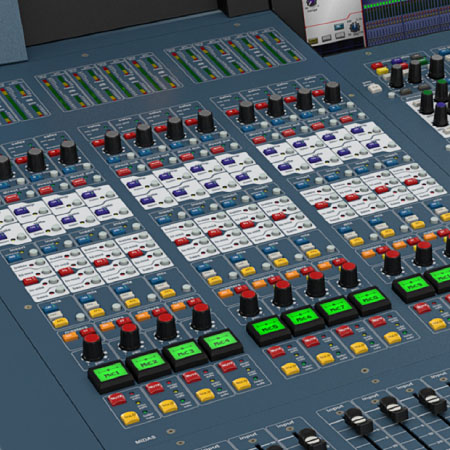
Digital Precision, Analogue Response
The oversampled digital signal processing algorithms, combined with the fully interpolated and touch sensitive user controls, result in the smooth continuous response and immediacy of working on an analogue console. Parameter adjustment becomes fast and easy, and the continuous phase shift of a swept frequency control is heard without the quantisation artefacts exhibited by competing digital consoles.
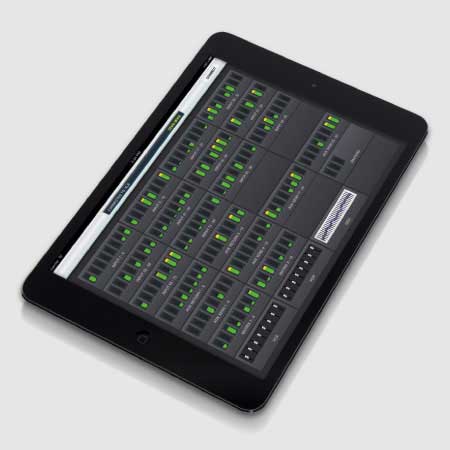
Wireless Remote Control
Delivering unprecedented control and mobility, the MIXTENDER App for iPad* combines control of key functions with the highly responsive system metering, allowing users to take control of PRO X using an iPad from anywhere in a venue. Support for multiple simultaneous iPads allows FOH and monitor engineers to work collaboratively, enhancing productivity and communication as well as saving valuable time during set-up.
The MIXTENDER App for iPad is available as a free download from the Apple App Store.
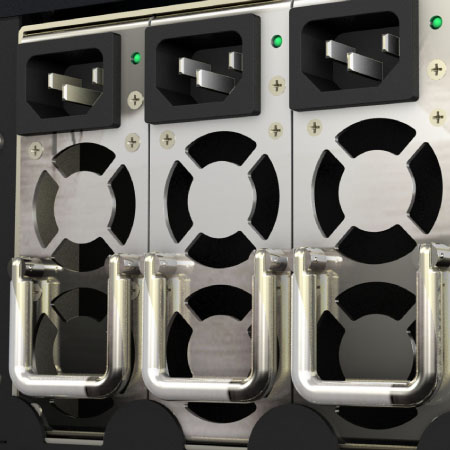
Redundancy - For Peace of Mind
The PRO X has dual-redundant control computers, and three removable power supplies - only two of which are required for operation. The power supplies, which are interchangeable with those in the NEUTRON Engine, are auto-voltage sensing for use on a worldwide basis and provide seamless switchover in the unlikely event of a loss of one of the three power supplies.
Combined with the dual-redundant HyperMAC snake and the redundant AES50 networking, no other console goes further in providing peace of mind. This means that during a show the user can focus on what is most important - treating the audience to a flawless sonic experience.
Architecture and Engineering Specifications
The control centre shall be designed for digital audio mixing applications and be optimised for use in live performance. It shall feature 168 simultaneous input channels and 99 time-aligned and phase-coherent output mix buses and operate at 96 kHz sampling rate.
The control centre shall include Gigabit and 100 Mbit/s Ethernet frame-based digital audio networking with a total network channel count capability of 288 inputs and 294 outputs at 96 kHz sampling rate. A Gigabit Ethernet frame-based digital audio network router shall be included with 192 bidirectional channels operating over optical fibre up to 500 m and CAT5/5E cable up to 100 m, and provide a dual redundant digital snake connection to the associated audio system digital signal processing engine.
The Gigabit digital audio network shall operate on a time-division multiplex basis, and shall provide accurate phase-aligned low-jitter clock distribution using embedded timing markers in the data streams to allow transmission over either Cat5/5E copper cable up to a distance of 100 m as specified by the IEEE 802.3 Ethernet standard, or up to distances of 500 m using 50/125 μm multimode optical fibre. It shall provide two levels of cyclic redundancy check (CRC) error detection - a checksum sent with the associated Ethernet frame and an additional checksum for audio data. A dedicated 200 Mbit/s auxiliary data channel shall be provided for control data.
The Gigabit digital audio network shall have an individual link latency of 62.5 μs at 96 kHz sampling rate and support dual redundant operation.
The 100 Megabit Ethernet frame-based digital audio network shall offer N+1 cable redundancy and be compliant with the Audio Engineering Society AES50-2011 standard.
In conjunction with the associated audio system engine digital signal processor, the control centre shall provide up to 36 assignable digital audio emulations of industry standard one-third octave proportional-Q response graphic equalisers and up to 24 simultaneous multi-channel digital audio effects. There shall be automatic latency management of all internal routing, external analogue insert and digital signal processing delays. This latency management system shall synchronise audio samples when summing to mix buses to ensure phase alignment of the summed signals.
The control centre shall provide a user navigation system including 10 variable control association (VCA) groups and 8 population (POP) groups. It shall also provide additional methods of user navigation including a mode to change the operation of the input faders to become send levels to the selected bus or output, a mode mapping of assignable controls to an internal effects processor, a mode to present the faders of an internal graphic equaliser on the VCA section faders and a mode to present the faders for a selected bus output on the VCA section faders.
The control centre shall have 29 motorised 100 mm faders with a rated life time of up to one million cycles and two daylight-viewable 15" full colour display screens. It shall include software interpolation of physical control elements and associated display feedback to eliminate digital quantisation artefacts.
The control centre shall have the provision for the optional wireless control using an Apple iPad, with a bespoke software application available as a free download from the Apple App Store.
The control centre shall include dual-redundant control computers, and three auto-ranging universal switch-mode power supplies with N+1 redundancy for use on a worldwide basis. The power supply modules shall be externally removable and interchangeable with those in the associated audio system engine digital signal processor.
The control centre shall be 1365 mm wide x 940 mm deep x 434 mm high (53.7" x 37.0" x 17.1"), with nominal weight 120 kg (264 lbs). The control centre shall be installed on a flat horizontal surface capable of safely supporting its weight. Input, output, and power connections shall be made at the rear panel of the control centre. Installers shall allow adequate space at the rear for connection and disconnection of input, output, and power connections. The power requirements shall be 100 to 240 VAC, 50 to 60 Hz.
The control centre shall be the Midas PRO X-CC-IP and no other alternative shall be acceptable.
Specification
System Specifications
| Sampling rate |
96kHz |
| Latency delay |
<2 ms (Input to Master output with no latency compensation) |
| Dynamic range |
110 dB, 22 Hz to 22 kHz |
| Maximum voltage gain |
80 dB, Inputs to Subgroups and Masters |
| Crosstalk |
-100 dB physically adjacent input channels |
| Fader/pan cut off |
-100 dB |
| Frequency Response |
0 dB to -1.0 dB, 20 Hz to 20 kHz |
| Gain Error @ 1kHz |
±1.0 dB |
Input CMRR
| 0 dB gain |
-80 dB |
| +40 dB gain |
-90 dB |
Distortion @ 0 dBu
| 0 dB gain |
0.01% |
| +40 dB gain |
0.03% |
Distortion @ +20 dBu
| 0 dB gain |
0.03% |
| +40 dB gain |
0.03% |
Noise Floor
| 0 dB gain |
-89 dBu, 22 Hz to 22 kHz (unweighted) |
| +40 dB gain |
-87 dBu, 22 Hz to 22 kHz (unweighted) |
Equivalent Input Noise (EIN)
| 0 dB gain |
-89 dBu, 22 Hz to 22 kHz (unweighted) |
| +40 dB gain |
-127 dBu, 22 Hz to 22 kHz (unweighted) |
Dynamic Range
| 0 dB gain |
110 dB, 22 Hz to 22 kHz (unweighted) |
| +40 dB gain |
108 dB, 22 Hz to 22 kHz (unweighted) |
Analogue Audio System Inputs
| Mic/Line Inputs | |
| Talk Mic Input | |
| Talk Back Input |
Analogue Audio System Outputs
| Line Outputs | |
| Monitor Outputs | |
| Assignable Outputs | |
| Talk Output | |
| Headphone Output |
Digital Audio System Inputs and Outputs
| AES3 Inputs | |
| AES3 Outputs | |
| AES50 Audio | |
| Snake (Copper) | |
| Snake (Fibre) | |
| Ethernet Control Data | |
| Word Clock Input | |
| Word Clock Output | |
| AES3 Sync Input | |
| AES3 Sync Output |
Other Interfaces
| External Ethernet Tunnel | |
| Screen Outputs | |
| KVM Inputs | |
| USB Interface | |
| MIDI Interface | |
| Displays |
Power
| Power Supplies | |
| Power Consumption |
Physical
| Dimensions |
1365 mm wide x 940 mm deep x 434 mm high (53.7" x 37.0" x 17.1") |
| Net weight |
120 kg (264 lbs) |
| Operating temperature range |
+5°C to +40°C |
| Storage temperature range |
-20°C to +60°C |
|
|
KALI AUDIO LP-8 V2 8-INCH POWERED STUDIO MONITOR (Black)
Lượt xem: 64866015.000.000 VND15.500.000 VND
CÔNG TY TNHH NISSI AUDIO
MST: 0317640168
Địa chỉ 1: 574 Huỳnh Thị Hai, P Tân Chánh Hiệp, Q12, TP.HCM
Địa chỉ 2: 331 Đường Số 8, KP 1, Phường An Phú, (Q2 cũ) TP Thủ Đức
Địa chỉ 3: Khu Phố Gia Lộc, TT Trảng Bàng, TP Tây Ninh
Điện thoại: 0846.840.840 - 0911.30.90.30
Email nissiaudio.vn@gmail.com
web: nissiaudio.com































